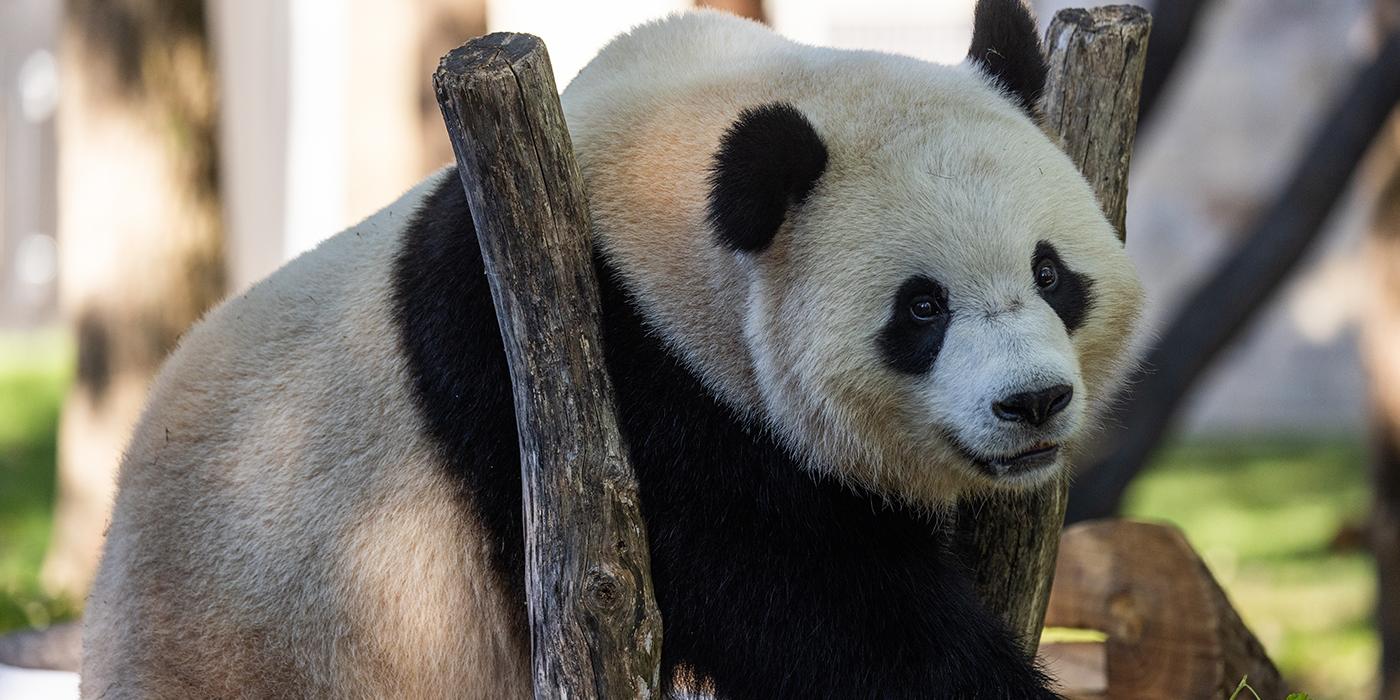How Artificial Insemination Helps Boost Panda Populations
The procedure can increase the likelihood of pregnancy in human care
Mei Xiang Update
The panda house is closed to the public beginning today, Sept. 1 to provide quiet for Mei Xiang as she enters the final stages of a pregnancy or pseudopregnancy. It is still too early to determine if she is pregnant, but veterinarians are continuing to monitor changes in her uterus. The only way to definitively determine if a female is pregnant is to detect a fetus on an ultrasound. Her behavior and hormones will mimic a pregnancy—even if she is experiencing a pseudopregnancy. Visitors can still see Tian Tian and Bei Bei outside. The best time to see them is between 8 a.m. and 10 a.m.
Can’t get enough pandas? Subscribe to The Panda Channel on Facebook to see videos of our giant pandas and red pandas!
Mei Xiang has now had 3 surviving cubs—the panda team is still waiting to see if she will have another cub this year—all as the result of artificial inseminations. Ideally, when breeding season rolls around, giant pandas will mate. However, Mei Xiang and Tian Tian have never mated naturally.
Enter artificial insemination—the process of depositing semen into the female around the time she’s ovulating. The semen is either freshly collected earlier that day or thawed from a cryopreservation bank. “Given the status of captive populations, using artificial insemination is good and will be useful in the future,” says Pierre Comizzoli, a research biologist at the Smithsonian Conservation Biology Institute.
Artificial insemination not only helps increase the likelihood of pregnancies in giant pandas under human care but it also helps increase genetic diversity. Scientists can use fresh or frozen sperm from the zoo’s resident male Tian Tian, or have semen from another male shipped from another zoo, if needed. Frozen semen is generally transported in a special container filled with liquid nitrogen, which helps maintain a low temperature and keeps samples from thawing. It is then stored at the Smithsonian Conservation Biology Institute's cryopreservation bank at the National Zoo.
“Instead of moving the male, you can transport his semen in its frozen state,” says Comizzoli. In 2013, after Mei Xiang and Tian Tian failed to breed naturally, SCBI and Chinese scientists and veterinarians inseminated Mei Xiang with frozen semen collected from Tian Tian in 2003 and frozen semen also collected in 2003 from Gao Gao, another giant panda at the San Diego Zoo. A few months later, Mei Xiang gave birth to Bao Bao, who, DNA analyses revealed, was the offspring of Tian Tian. In 2015, scientists combined fresh semen from Tian Tian with frozen semen from Hui Hui, a 10-year-old panda in China. Bei Bei is the product of that AI procedure.
Occasionally, scientists will use frozen semen from a male that has already died. “We can still use their genes in the management of population,” says Comizzoli. “AI is a tool that’s extremely useful to sustain the genetic diversity in captive populations. We will keep using that no matter what.”
In addition, other reproductive technologies like In Vitro Fertilization (IVF) and embryo transfers simply haven’t been developed in giant pandas, primarily because of the unpredictability of the ovulation cycle in giant pandas. “We don’t know when would be the best timing to collect [the eggs] from the female. . .or when to transfer an embryo into a recipient female,” says Comizzoli.“Besides natural breeding, AI is the only technique we have for now.”
The AI effort isn’t as involved in several other species such as antelope, clouded leopards, and gazelles, where researchers can trigger and stimulate the estrus period—albeit still within the breeding season. Says Comizzoli, “In the panda we don’t know how to control that, and we prefer to. . .wait for the female to have this natural period of estrus.”
Related Species:




